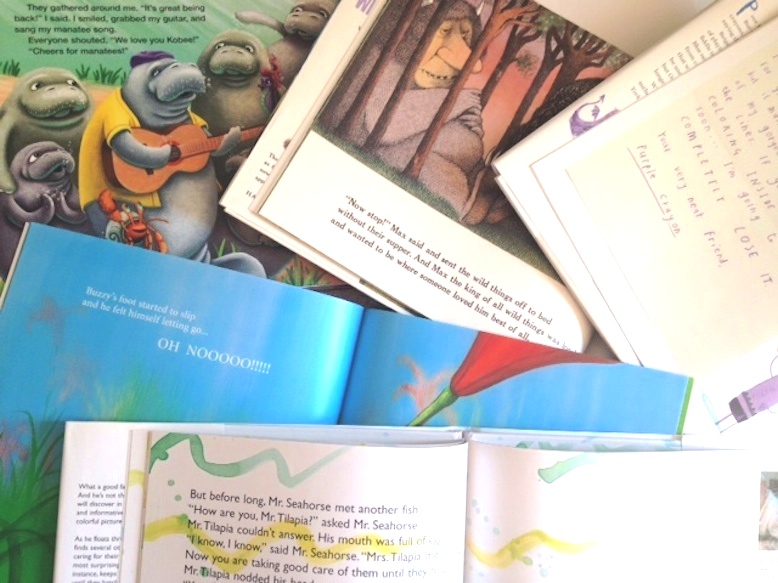How to Harness the Extraordinary Power of Book Sharing (Part 2)
“You cannot write for children. They’re much too complicated. You can only write books that are of interest to them.” ― Maurice Sendak
This is a continuation on some excellent ways you can choose and share an appropriate book suited not only to the child’s reading level, but also to your curriculum.
It’s important to research the book’s tone and language before you read it aloud. The tone and text an author incorporates into a picture book can define which stories are great ones as compared to which ones are just average. Does your book choice have alliteration and/or sounds that the children will enjoy? A great example at play here is the title, Princess Pigtoria and the Pea by Pamela Duncan Edwards. This book has a rich goldmine of alliteration! Or The Lorax, by Dr. Seuss. Take a look at a passage in this great classic …
Then he hides what you paid him
away in his Snuvv,
his secret strange hole
in his gruvvulus glove.
It’s also very important to decide if the picture book’s vocabulary is appropriate for your reading session. Children enjoy learning new words, however if the book has too many unfamiliar ones, they will have a difficult time trying to understand the story.
Get ready … get set …
Now – do a rehearsal on how you would want to read the book aloud to your audience. Does the story arc flow from one page to another? If there are several characters, you may want to change the tone of your voice to fit each one. This will definitely make your reading session very entertaining. Just remember not to over-act the character parts. This is especially true if you are reading to young children.
If the book you chose for a reading is an informational picture book, such as Kobee Manatee, you will want to read its fictional story first, then go back and explore the fact boxes, one at a time. This allows both you and the children to have plenty of fun with both the story and the learning process.
Finally, develop good questions that bring the children in. Of course it is important to focus on the illustrations and story, however make the book “all about the children to keep them interested.” As the child becomes more experienced at listening and reading picture books, he or she will be able to focus discussions more on the story.
Ok – now go for it and share that special picture book you found. It will be plenty of fun for everyone!
Related Posts
How to Harness the Extraordinary Power of Book Sharing (Part 1) (August 26, 2014)
https://www.kobeemanatee.com/how-to-harness-the-extraordinary-power-of-book-sharing-part-1/
8 Ways Picture Books Meet Young Children’s Needs – Part 1 (July 29, 2014)
https://www.kobeemanatee.com/8-ways-picture-books-meet-young-childrens-needs-part-1/
8 Ways Picture Books Meet Young Children’s Needs – Part 2 (August 1, 2014)
https://www.kobeemanatee.com/8-ways-picture-books-meet-young-childrens-needs-part-2/
~ Robert Scott Thayer
